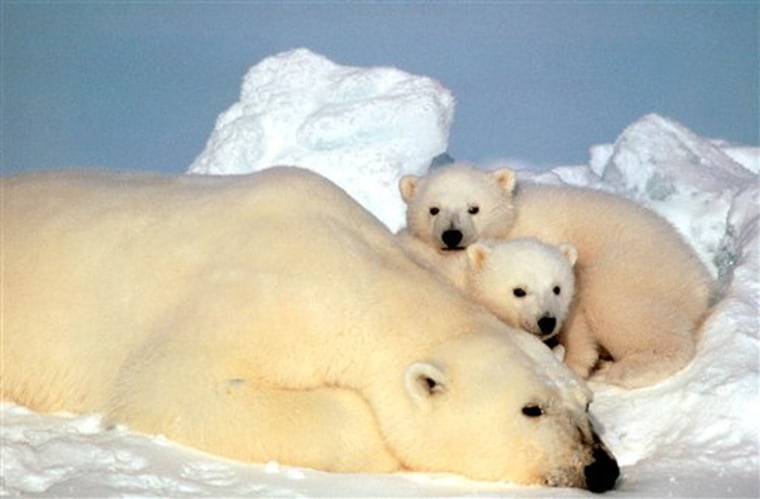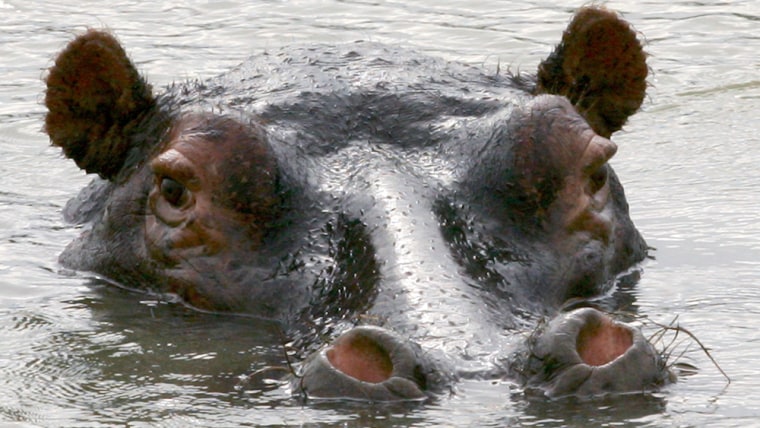Polar bears and hippos have joined the ranks of species threatened with extinction from climate change, unregulated hunting, habitat destruction and other man-made dangers, leading researchers said Tuesday in a listing of the world’s wildlife.
The World Conservation Union, or IUCN, said more than 16,000 species of animals and plants are at risk of disappearing, including one in three amphibians, one in four mammals and one in eight birds.
The IUCN added 530 species to its “Red List” of endangered species since the last version released two years ago
“Biodiversity loss is increasing, not slowing down,” said Achim Steiner, the conservation group’s director general. “The implications of this trend for the productivity and resilience of ecosystems and the lives and livelihoods of billions of people who depend on them are far-reaching.”
China, Brazil, Australia and Mexico are home to large numbers of threatened species, said the IUCN, whose members include 81 governments, more than 850 non-governmental groups and some 10,000 scientists from around the world.
It said countries worldwide needed to boost efforts to preserve biodiversity through reduced emissions, tighter fishing and hunting controls, and other measures.
Polar bears, hippos
Without a reversal of global warming trends, the IUCN predicted polar bear populations would drop more than 30 percent in the next 45 years as melted ice caps deprive the animals of their habitat.

It classified the polar bear as a “vulnerable” species, one step down from “endangered” in its ranking of extinction risk. The polar bear was previously called a less-severe “conservation dependent” species.
The common hippo was also ranked as vulnerable, “primarily because of a catastrophic decline in the Democratic Republic of Congo,” the IUCN said.
Unrestricted hunting for meat and ivory has caused a 95 percent decline in the central African country’s hippo population since 1994, it said. The animal has never before been listed as threatened.
Other concerns
The report also found that dama gazelles, once the most populous species of gazelle in the Sahara desert, are now “critically endangered” as a result of poaching.
Freshwater fish have suffered some of the most dramatic population declines because of human activities that damage their habitat, like forest clearance, pollution and water extraction.
In the Mediterranean, more than half of the 252 endemic species are threatened with extinction. Seven species, including two relatives of carp, are already extinct, the IUCN said.
The conservation union warned that the decline in wetlands and freshwater ecosystems will also damage supplies for humans of food, clean drinking water and sanitation.
In East Africa, one in four freshwater fish species are threatened with extinction.
In Malawi, where freshwater fish account for 70 percent of the animal protein that humans eat, the numbers of lake trout in Lake Malawi have halved in the past decade.
“This could have major commercial and dietary consequences for the region,” the IUCN said.
Ocean life was also cited as vulnerable. Of 547 species of sharks and rays assessed in the report, 20 percent were found to be at risk of extinction. Bottom-dwelling species also logged huge declines as fisheries have reached into ever-deeper waters.
“Populations are destined to decline in the absence of international catch limits,” the report said, adding regulations on mesh size and nonfishing areas could help restore stocks.
‘Reversing the trend is possible’
Some 784 species are listed as extinct — only a small increase from 2004 — while 65 are found only in captivity. But the situation looks a little brighter for some others, such as the white-tailed eagle and Indian vultures.
“Reversing this trend is possible, as numerous conservation success stories have proven,” Steiner said. “Biodiversity cannot be saved by environmentalists alone — it must become the responsibility of everyone with the power and resources to act.”
Steiner said resurgent populations of white-tailed eagles in Europe showed that protective measures can protect vulnerable species.
“Conservation measures are making a difference,” Steiner said. “We should not be passive bystanders in the unfolding tragedy of biodiversity loss and species extinction.”
The Red List classifies about 40,000 species according to their risk of extinction and provides a searchable online database of the results. The total number of species on the planet is unknown, with 15 million being the most widely accepted estimate. Up to 1.8 million are known today.
More about the report is online at www.iucn.org.
